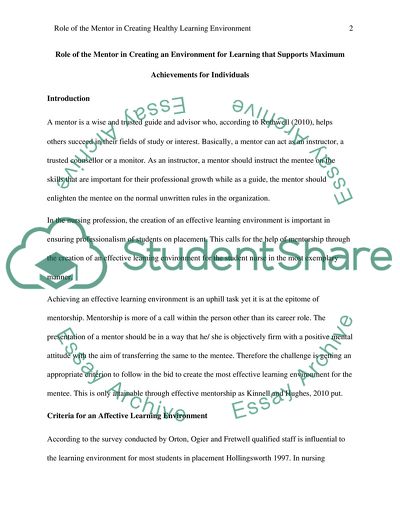Cite this document
(“Ensuring that the clinical setting is an effective learning Essay”, n.d.)
Ensuring that the clinical setting is an effective learning Essay. Retrieved from https://studentshare.org/miscellaneous/1568327-ensuring-that-the-clinical-setting-is-an-effective-learning-environment-is-a-key-role-of-the-mentor-supporting-your-answer-with-appropriate-education-theory-discuss-your-role-in-creating-an-environment-for-learning-that-supports-maximum-achievements-for
Ensuring that the clinical setting is an effective learning Essay. Retrieved from https://studentshare.org/miscellaneous/1568327-ensuring-that-the-clinical-setting-is-an-effective-learning-environment-is-a-key-role-of-the-mentor-supporting-your-answer-with-appropriate-education-theory-discuss-your-role-in-creating-an-environment-for-learning-that-supports-maximum-achievements-for
(Ensuring That the Clinical Setting Is an Effective Learning Essay)
Ensuring That the Clinical Setting Is an Effective Learning Essay. https://studentshare.org/miscellaneous/1568327-ensuring-that-the-clinical-setting-is-an-effective-learning-environment-is-a-key-role-of-the-mentor-supporting-your-answer-with-appropriate-education-theory-discuss-your-role-in-creating-an-environment-for-learning-that-supports-maximum-achievements-for.
Ensuring That the Clinical Setting Is an Effective Learning Essay. https://studentshare.org/miscellaneous/1568327-ensuring-that-the-clinical-setting-is-an-effective-learning-environment-is-a-key-role-of-the-mentor-supporting-your-answer-with-appropriate-education-theory-discuss-your-role-in-creating-an-environment-for-learning-that-supports-maximum-achievements-for.
“Ensuring That the Clinical Setting Is an Effective Learning Essay”, n.d. https://studentshare.org/miscellaneous/1568327-ensuring-that-the-clinical-setting-is-an-effective-learning-environment-is-a-key-role-of-the-mentor-supporting-your-answer-with-appropriate-education-theory-discuss-your-role-in-creating-an-environment-for-learning-that-supports-maximum-achievements-for.


